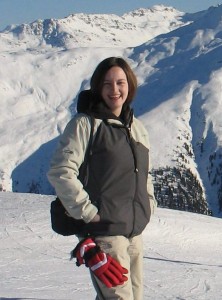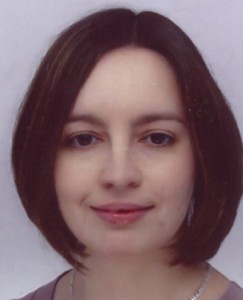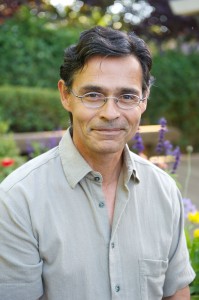This October, twenty sites around the globe will simultaneously build level-3 Menger cubes out of business cards, creating a distributed version of the world’s first level 4 Menger cube. We’ll learn how to make these at Bucknell. All Bucknell students are welcome to attend this MAA event.
Category: Events
Distinguished Visiting Professor Talk Series: Nema Dean, University of Glasgow, September 17th @4pm in Olin 372
Title: Identifying Boundaries in Spatial Modelling for Disease Mapping
Abstract: The aim of disease mapping is to estimate the spatial pattern in disease risk across a set of areal units, in order to identify units which have elevated disease risk. Existing methods use Bayesian hierarchical models with spatially smooth conditional autoregressive priors to estimate disease risk, but these methods cannot identify the geographical extent of spatially contiguous high-risk clusters of areal units. We propose a two stage approach, which first produces a set of potential cluster structures for the data and then chooses the optimal structure by fitting an extension of the Bayesian hierarchical model. The first stage uses a hierarchical agglomerative clustering algorithm, spatially adjusted to account for the neighbourhood structure of the data. This algorithm is applied to data prior to the study period, and produces a set of n potential cluster structures. The second stage fits a Poisson log-linear model to the data, in which the optimal cluster structure and the spatial pattern in disease risk is estimated via a Markov Chain Monte Carlo (MCMC) algorithm. After assessing the methodology with a simulation study, it was applied to a study of respiratory disease risk in Glasgow, Scotland, where a number of high risk clusters were identified.
Distinguished Visiting Professor Talk Series: Nema Dean, University of Glasgow, September 16th @ 4 PM in Olin 372
Title: How many groups? Visual tools for assessing cluster structure in data.
Abstract: Cluster analysis is a set of methods designed to explore and find unknown group structure in (multivariate) data. There are a wide variety of methods available, the application of which can result in many different proposed cluster structures. Particularly for more heuristic methods (e.g. hierarchical clustering), it can be difficult to make an objective decision on which method/number of clusters gives the “best” answer. One alternative that claims to address this flaw is the model-based clustering methodology – the application of, often Gaussian, mixture models usually with some likelihood based criterion for selection of the best model/number of mixture components. An issue with this approach can be its tendency to overestimate the number of groups when associating each mixture component with a cluster (estimated group). This talk seeks to present novel applications of an old fashioned clustering tool – the dendrogram – to visually assess either combination of mixture components into clusters or to assess the similarity/grouping of clustering solutions from a variety of methods (applied to the same data). The dendrogram’s tree diagram presentation is a particularly useful graphic as it can be easily understood by laypeople and is a visually appealing tool for exploratory analysis into group structure. It is also a good summary for data of arbitrary dimension.
Student Talk Series: Tony DeRose, Pixar Animation Studio, September 18th @ noon in Olin 268
Title: Wavelets in computer graphics
Abstract: Wavelets are an important mathematical tool that has found uses in many scientific and engineering disciplines. They are an important technique for use in computer graphics and the closely related field of image processing. In this lecture I’ll provide an introduction to the theory of wavelets, and I’ll highlight their use to solve a variety of computer graphics problems.
Speaker biography: Tony DeRose is currently a Senior Scientist and lead of the Research Group at Pixar Animation Studios. He received a BS in Physics in from the University of California, Davis, and a Ph.D. in Computer Science from the University of California, Berkeley. From 1986 to 1995 Dr. DeRose was a Professor of Computer Science and Engineering at the University of Washington. In 1998, he was a major contributor to the Oscar (c) winning short film “Geri’s game”, in 1999 he received the ACM SIGGRAPH Computer Graphics Achievement Award, and in 2006 he received a Scientific and Technical Academy Award (c) for his work on surface representations. In addition to his research interests, Tony is also involved in a number of initiatives to help make math, science, and engineering education more inspiring and relevant for middle and high school students. One such initiative is the Young Makers Program that supports youth in building ambitious hands-on projects of their own choosing.
Mathematics Department Talk: Tony DeRose, Pixar Animation Studio, September 18th @ 4 pm at the Campus Theatre
Title: Math in the Movies
Abstract: Abstract: Film making has undergone a revolution brought on by advances in areas such as computer technology, geometry, and applied mathematics. Using numerous examples drawn from Pixar’s feature films, this talk will provide a behind the scenes look at the role that math has played in the revolution.
Speaker biography: Tony DeRose is currently a Senior Scientist and lead of the Research Group at Pixar Animation Studios. He received a BS in Physics in from the University of California, Davis, and a Ph.D. in Computer Science from the University of California, Berkeley. From 1986 to 1995 Dr. DeRose was a Professor of Computer Science and Engineering at the University of Washington. In 1998, he was a major contributor to the Oscar (c) winning short film “Geri’s game”, in 1999 he received the ACM SIGGRAPH Computer Graphics Achievement Award, and in 2006 he received a Scientific and Technical Academy Award (c) for his work on surface representations. In addition to his research interests, Tony is also involved in a number of initiatives to help make math, science, and engineering education more inspiring and relevant for middle and high school students. One such initiative is the Young Makers Program that supports youth in building ambitious hands-on projects of their own choosing.
Student Talk Series: Jeffrey Langford, Mathematics Department, September 4th @ noon in Olin 268
Title: Mathematical Magic
Abstract: It takes a true magician decades to cultivate his or her skill. But in this talk, I’ll show you everything you need to amaze your friends, all in under an hour. What’s the trick? Magic? Not really. We’ll tap into our mathematical skill – something we’ve been honing for years. Come to this talk, and I’ll show you how to turn mathematical muscle into magical prowess.




